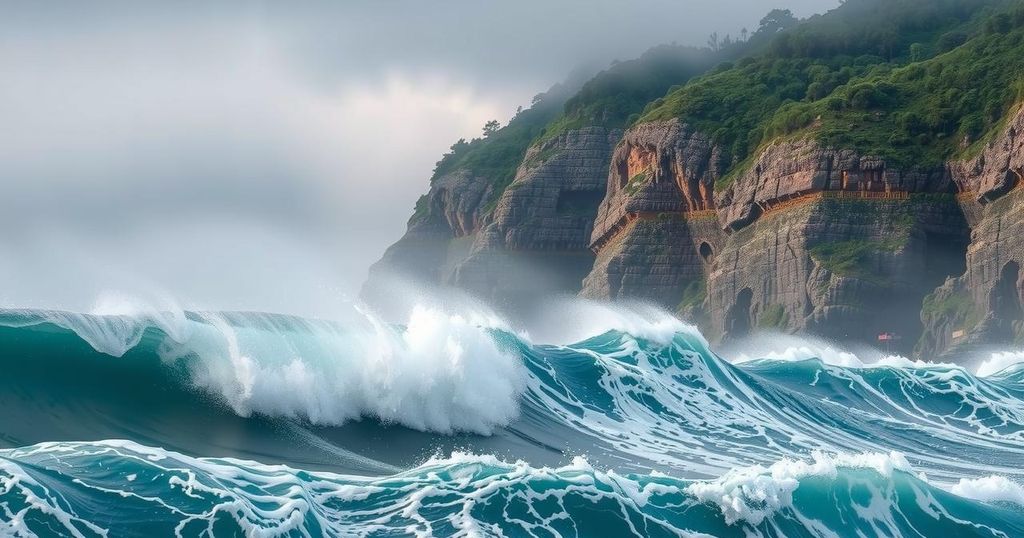Massive waves of up to four meters hit Ecuador and Peru, causing port closures and at least one death. The Peruvian navy attributes the waves to winds from the US coast, leading to submerged jetties and damaged fishing boats. Numerous ports were closed until January 1, with warnings issued for ongoing rough sea conditions.
In a devastating turn of events, massive waves reaching heights of up to four meters have struck the coasts of Ecuador and Peru, resulting in the closure of numerous ports and the tragic death of at least one individual. Reports indicate that jetties and public squares in parts of Peru were submerged, prompting residents to evacuate to safer, higher ground. The waves, attributed by the Peruvian navy to winds off the United States coast, have led to significant disruptions in maritime activities, with dozens of fishing boats sustaining damage and numerous beaches being closed to protect public safety.
During the crisis, thirty-one fishermen stranded in tumultuous waters were successfully rescued by the navy. However, one fisherman highlighted the dire situation of around 180 others who remained adrift at sea, lamenting the lack of supplies and water. Meanwhile, in Ecuador, officials reported the recovery of a body in Manta, underlining the severity of the situation. In addition to the hazardous conditions faced in Peru, authorities in Chile also issued warnings as huge waves affected the central Chilean coast.
The Peruvian government closed 91 out of 121 ports until January 1, further reflecting the scale of the emergency. Aerial surveys revealed extensive damage, particularly affecting fishermen along the coast and raising concerns about the economic impact of the disaster. Navy Captain Enrique Varea explained that the phenomenon originated thousands of kilometers away, indicating that these waves are products of persistent winds acting on the ocean’s surface. The National Emergency Operations Centre forecasted that rough sea conditions would likely persist until January 1, affecting coastal communities and maritime operations.
It is imperative for affected individuals and communities to remain vigilant and heed safety warnings from authorities as they navigate these precarious conditions. The situation remains fluid, and ongoing weather patterns may continue to pose risks along the Peruvian and Ecuadorian coasts.
The urgent situation unfolding along the coasts of Ecuador and Peru is characterized by severe maritime conditions caused by massive waves. Originating from winds off the United States coast, these waves have disrupted local economies, particularly affecting the fishing industry. The dangers posed by such natural phenomena necessitate immediate governmental response and community preparedness, especially during a period when coastal regions face heightened risks due to climatic influences and geographical positioning.
In conclusion, the recent massive waves impacting Ecuador and Peru have led to significant port closures, damage to fishing boats, and at least one reported fatality. The origins of these waves, stemming from distant winds, underscore the far-reaching effects of environmental conditions on coastal communities. Authorities have responded by closing numerous ports and securing the safety of fishermen, highlighting the critical nature of monitoring and addressing climate-affected challenges in maritime areas.
Original Source: www.arnnewscentre.ae






